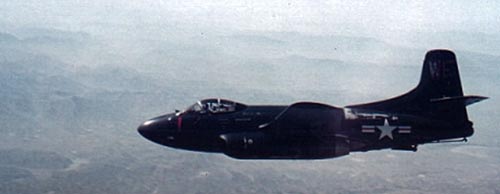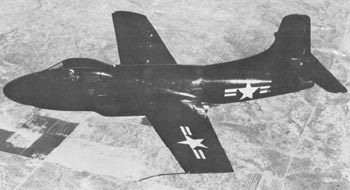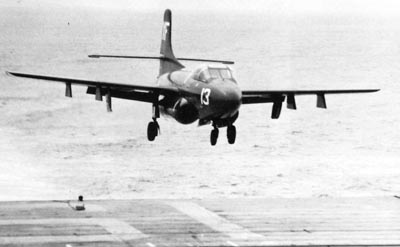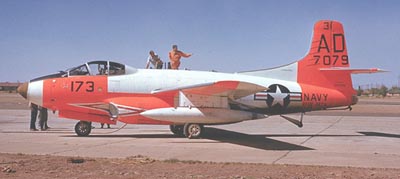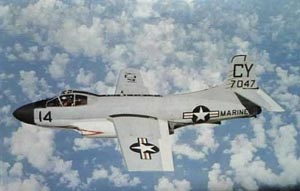 |
||||||
|
||||||
|
|||||||
|
|||||||
| Douglas F3D Skyknight | |||||||
The Skyknight was a very unique fighter due to its bulkiness. That was mostly owed to the fact, that it was designed to intercept bombers at night and was build around the only powerful intercept radar system that was available at the time, the Westinghouse AN/APQ-35. This made the radar vision of the Skyknight superior to any other fighter of its time, most which did not have any radar. |
|||||||
|
|||||||
The Skyknight was first used in combat in the Korean war, were it soon became the main escort for the B-29-formations, which were vulnerable to attack by the nimble MiG-15. The Skyknight proved successful thanks to its powerful radar, which made it superior to smaller fighters at night, and especially the second radar in the tail proved useful, as it warned the pilot, if a MiG was on the tail. |
|||||||
|
|||||||
| After the Korean war, the Skyknight became soon obsolete as a fighter, when new swept-wing designs became available. Douglas proposed an improved swept-wing Skyknight, the F3D-3, to the Navy, but that version never reached prototype stage. The designs for the wings and tail where later modified for the creation of the A3D Skywarrior. Thanks to its radar, and its stability in the air, the Skyknight became the development testbed for the new Sparrow-missile and as such was the first Navy aircraft that became operational with air-to-air missiles. After being retired as a fighter, the Skyknight was used mainly for radar training. It was the only second-line type that was available, which had a strong enough radar and could fire Sparrow missiles, which could help to train the radar operators for the F-4 Phantom II. |
|||||||
|
|||||||
Its bulky and spacious fuselage led the Skyknight to its final role, as an ECM-bird. As such, it saw action again in Vietnam, were it was flown by Marines Squadrons to support air-to-ground strikes with electronic countermeasures, until the Squadrons converted to EA-6's. |
|||||||
|
|||||||
| wingspan: 15.24m length: 13.85m height: 4.90m empty weight: 6.813kg max loaded weight: 9.715kg maximum speed: 852km/h range: 2.212km |
|||||||
| return to top |
